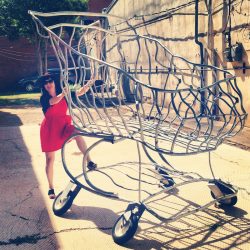
Why do most headstones face east?
Most people have heard the word “headstone” before. Generally speaking, headstones mark where the head of the deceased is situated. In most Christian cemeteries, the person is oriented so that the body faces east. According to this tradition, this means they will be facing the right direction when the sun comes up on Judgment Day.
In a family plot, however, there is often one major headstone. While this monument may have the names of family members inscribed on it, it usually only has the family’s last name. So, you might see a large marker that simply reads, “Smith.”
What is a footstone?
Other family members will be buried in the family plot, with smaller headstones indicating their full names, birth and death dates. Family plots such as these often include footstones. A footstone is a small marker placed at the feet of the deceased. Footstones are most often engraved with a nickname or family title, such as “sister.”
Don’t take labels too literally!
If you are researching the family and trying to piece together who is related to who, be careful not to take these footstones too literally. In the old days, terms like “Aunt” and “Uncle” were not always meant in their literal sense, but were often used as affectionate terms of endearment.
In my book, The Lynching of the Santa Claus Bank Robber, for instance, one of the police officers involved was known simply as “Uncle Tom” by everyone in town – whether they were related to him or not!
Just remember: when it comes to historic graveyards, just because something is written in stone doesn’t mean it is written in stone!

FIELD GUIDE TO CEMETERY SYMBOLISM:
I am currently creating a field guide to cemetery symbolism. Each Tuesday, I am sharing a small snippet from my upcoming book. It’s my goal to create a handy-dandy pocket guide for taphophiles, genealogists, ghost hunters, and anyone else interested in the historic graveyard symbols that have become forgotten over the years.
What symbols are you curious about?
Let me know in the comments if there is a certain symbol that you are curious about. Also, if you would like to know when the cemetery symbolism guide is available for purchase, scroll down and sign up for my newsletter! I look forward to hearing from you!
Want to read more?
To read about more weird, offbeat, and overlooked places, check out my best selling travel guide: Unexpected Texas.
For ghost hunting hot spots, check out my best selling travel guide to haunted places: Paranormal Texas.
For a strange-but-true tale of Texas history, check out: The Lynching of the Santa Claus Bank Robber. Happy travels!
Hey, you! Want to come along for the ride?
For updates on my offbeat travels, books, & other fun stuff (such as postcards from the road!) subscribe to my author newsletter using the form below:

(not sure what that stuff up there about imthecatlady came from…)
It took some cajoling, but I finally convinced WordPress to ditch the crazy cat lady stuff!
Feet toward the east so that, when Jesus comes, and everyone sits up, they’re facing him.
Though sometimes, feet towards the road (if one passes by the cemetery) or feet towards the church/chapel.
More importantly, if feet towards the west, then someone really didn’t like that person, and he won’t see Jesus when he sits up, and will thus be lost.
Yeah, the whole burial directions is one of those topics that will probably be a whole chapter on its own! There are so many variations on this one little theme.
In the middle ages, people wanted to be buried in the churchyard, for instance, and which side of the church you were buried on meant something. If you had committed suicide, your body wasn’t allowed to go through the church gates but had to be handed over the back fence!